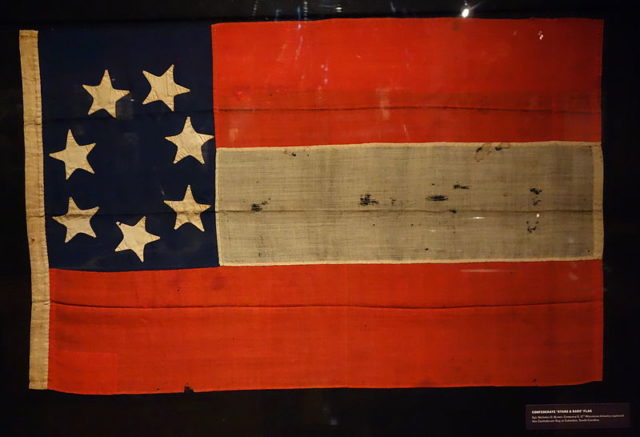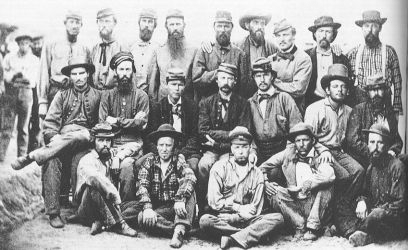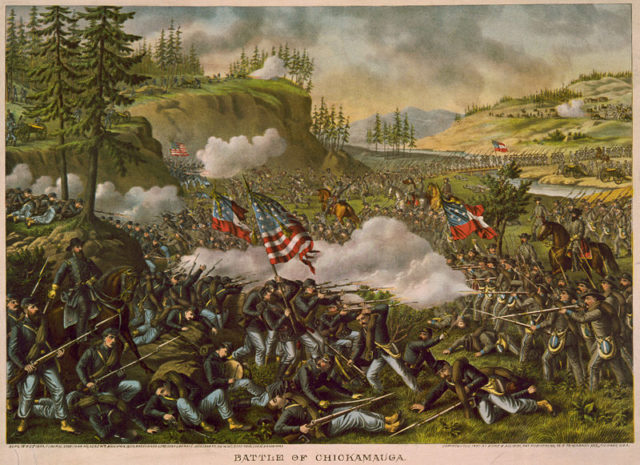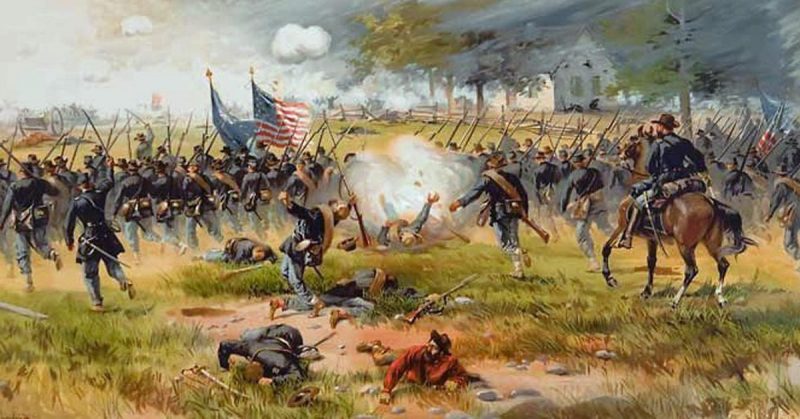It is easy to think of wars from earlier centuries in rather simplistic terms, especially as they fade further into the past. The American Civil is usually seen in terms of North versus South, Union versus Confederate, pro-slavery versus abolition. But although these concepts broadly defined the two different sides of the conflict, there were individuals and groups on both sides who rebelled against the prevailing rhetoric. One of the most important of these groups emerged in the Southern states in the early days of the war.
Originally calling themselves the Heroes of America, (HOA) they would later become better known by their nickname – the Red Strings or Red String Band. The aim of the group was to promote peace, oppose the Confederacy and support the abolition of slavery
The Origin of the Heroes of America
The origins of the movement are not clear, but the original Heroes of America seem to have been a group of armed insurgents who were charged with treason for supporting the aims of the Union rather than supporting the Confederacy around 1861. However, it was not until a few years later, in 1863, that this growing underground resistance movement became more formalized, thanks to the efforts of a number of prominent North Carolina Citizens.
The founder members of the group included Henderson Adams, the state auditor at the time, along with John Pool, a North Carolina lawyer and Johnston Lewis, a chemist and physician. Lewis was originally from Philadelphia and had been conscripted into the Confederate army, where he had served as a military physician for some years.

Secret Society
The movement probably began in North Carolina because here there was a strong Quaker influence. It soon spread along the so-called “Quaker Belt” to West Virginia and Eastern Tennessee before gradually finding support in a number of other southern states.
The name “Red String” comes from the biblical story of the Israelites in Jericho. In this story, the Israeli spies who supported Joshua placed a red string outside their homes to identify them to their fellow spies. The Heroes of America did the same or wore a red string on their lapels to identify themselves to those who shared their aims and objectives.
The group was a secret society modeled on societies like the Freemasons. As well as displaying red strings, members used code words and secret signs to identify each other. Secrecy was vital because their activities would be regarded as treasonous by the majority of their neighbors, as well as the state authorities.
The movement attracted people from all walks of life who were drawn to it for a wide variety of reasons. As the group supported the abolition of slavery, it was not surprising that the many freed slaves supported the movement as well as pacifists, Quakers, and members of other similar religious groups.

Hardships of War
Although most of those who joined the movement early on were motivated by principles or politics, many of those who joined later were not. As time went by the movement began to attract southerners who were simply fed up with a war which seemed to be demanding a great deal and offering little in return.
One of the key issues that divided north and south was the right to own slaves. In the states where resistance was strongest, only a small minority of wealthy planters owned slaves. It was not surprising that ordinary people began to question why they should put up with the hardships of war to preserve the rights of the wealthy minority, especially as plantation owners who stood to gain most from defeating the Union were exempt from the draft.
Legislation passed in 1864 gave the government the right to seize crops, equipment, slaves, and anything else the military might require, for a negotiated price – usually one that favored the government. As time passed the prices offered got lower and lower, and so did the citizens’ morale and enthusiasm for the continuing and increasingly hopeless struggle.
Activities
The Red Strings were active throughout the period of the Civil War, and it is estimated that around 10,000 members had joined the group by the end of the conflict. Their activities included protecting deserters and those who refused to fight as well as guiding escaped prisoners of war across the Appalachian mountains into Tennessee or Kentucky. They acted as spies and provided the Union with information about the movements of Confederate troops.
They also ran a secret underground railway to help the Union soldiers move quickly around the Southern states. The movement also tried to establish regiments of freed slaves to fight for the Unionist cause. Unfortunately, they also attracted a small number outlaws and criminals, and some factions descended onto lawlessness, attacking homes of Confederate supporters.
In 1864 the movement was discovered and publicly denounced. However, because of their close guarded secrecy, there was little that could be done to apprehend and punish the members. An article in the Raleigh Daily Conservative Newspaper in July 1864 called them traitors and exposed some of their secret signs and code words. However, the accuracy of the article which claimed that the information came from a young man who joined the Red String Band then saw better of it is hard to verify.
Reports at the time also suggested that rather than being motivated by principles the members of the group simply wanted to ingratiate themselves with the winning side in the increasingly likely event of a Confederate defeat.

After the War
When the war ended in 1865 following the surrender of the Confederacy, the Red String band could claim to have achieved their objective through the contribution they made to the victory of the Union and the end of the war. However, their activities continued to some extent, promoting civil rights and opposing the Ku Klux Klan. In time the movement dwindled as the primary reason for its existence had now gone. But for a while, the term “red string” remained and became synonymous with secret rebel societies in the South.
